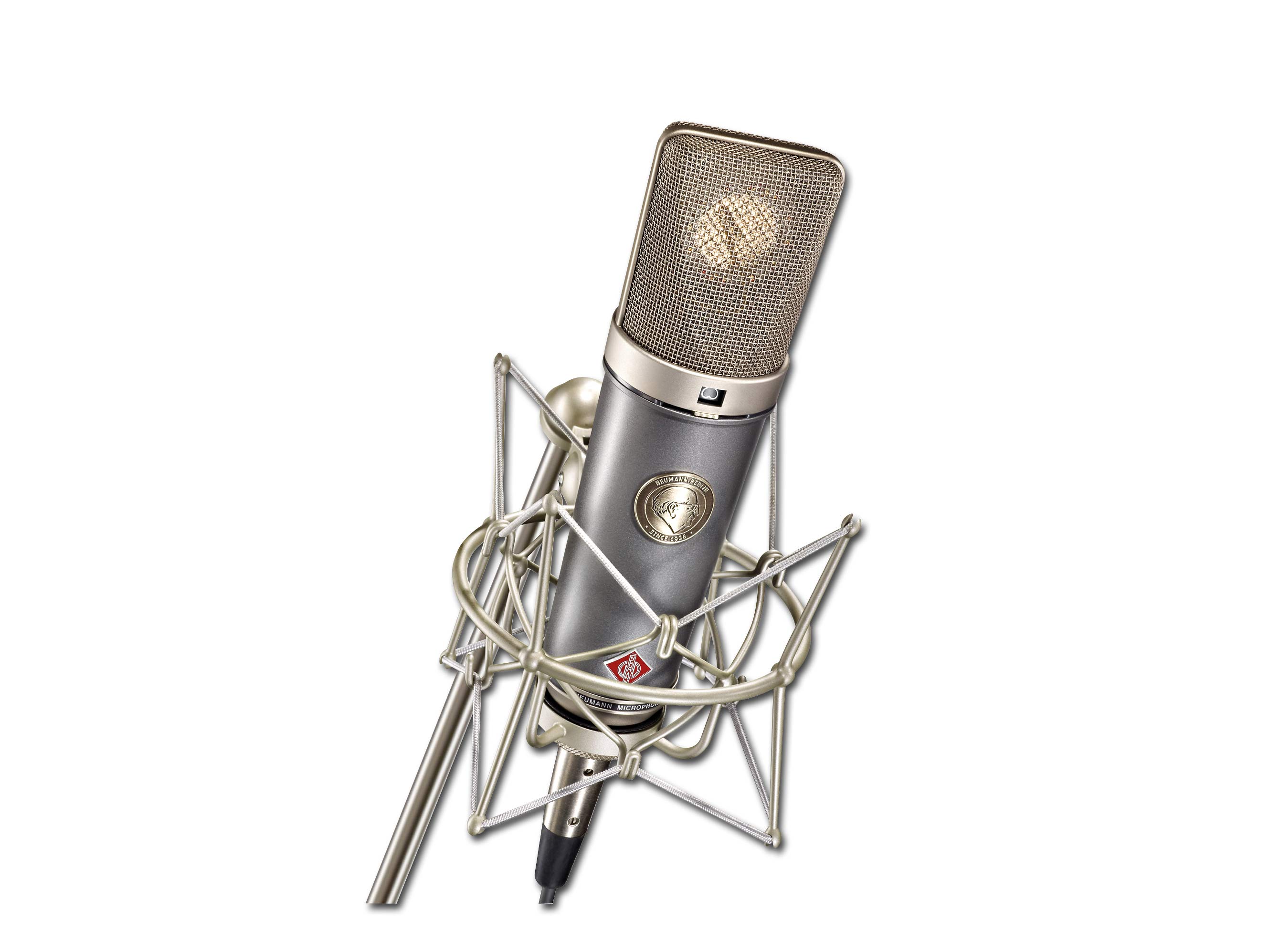MusicRadar Verdict
A useful and versatile microphone for heavyweight instrument recording duties.
Pros
- +
Versatile polar patterns. Wide frequency range. Dual-colour design.
Cons
- -
There are better choices for vocals. Not as open-sounding as some mics.
MusicRadar's got your back
To mark Neumann's 80th year of business, the TLM 67 is based on the company's classic 1960s U67 microphone. It uses the same K67 capsule and features a special circuit design that closely reproduces the valve or tube sound characteristics of the U67.
The TLM 67 uses an electronic circuit instead of an output transformer - the TLM bit stands for Transformer-Less Microphone - and it's the same shape and size as the well-known U87.
The microphone has a frequency range of 20Hz to 20kHz, features cardioid, omni and figure-of-eight polar patterns, and offers a 10dB pad and a low-cut filter. It can operate at sound pressure levels of up to 105dB without distortion, and has a dynamic range of 94dB(A) or 104dB(A) with the pad switched in.
If you're recording very high sound pressure levels, say, from brass or percussion instruments, the pre-attenuation 'pad' on the back of the microphone can be switched in to avoid overloading the next stage - ie, the mic pre.
The actual pre-attenuation amount depends on the polar pattern: 14dB with cardioid and 10dB with omni and figure-of-eight patterns.
The other switch on the back can be used to change the cutoff frequency of the high-pass filter. This helps to suppress unwanted low-frequency sounds from wind noise, trucks rumbling past, or whatever. It can also be used to compensate for the proximity effect that boosts low frequencies when the microphone is close to the source.
The TLM 67 is supplied without any accessories, so you have to pay out an extra £250 if you want the EA87 elastic suspension and around £30 for the WS87 windscreen mount, which provide better suppression of structure-borne and wind noise.
Sound and summary
Comparing the TLM 67 to an early '70s Neumann U87i, which you might be inclined to think that it would be very close to, we realised that they are really quite different. We recorded piano, in mono, through both microphones and discovered that the older model sounds a lot more open and natural.
The TLM has an appreciably different tonal character. We do prefer its sound to several of the less expensive condenser mics, such as the Shure KSM44, and compared with the Mojave MA100 and the Telefunken AK47, the TLM 67 delivers an extended bass response.
The TLM 67 is very much a workhorse microphone that you can use to capture everything from speech to rock bands to orchestral recordings, but it would not be our first choice for vocals.
The nearest comparisons for us would be the AKG C414 XLS and the Beyer MC840. The C414 doesn't sound quite as smooth as the TLM67 and the MC840 doesn't reproduce the piano as well, but it does give a sound that's more open and sweeter in the mid range.
Our recommendation? Try before you buy.
Future Music is the number one magazine for today's producers. Packed with technique and technology we'll help you make great new music. All-access artist interviews, in-depth gear reviews, essential production tutorials and much more. Every marvellous monthly edition features reliable reviews of the latest and greatest hardware and software technology and techniques, unparalleled advice, in-depth interviews, sensational free samples and so much more to improve the experience and outcome of your music-making.
“The last thing Billy and I wanted to do was retread and say, ‘Hey, let’s do another Rebel Yell.’ We’ve already done that”: Guitar hero Steve Stevens lifts the lid on the new Billy Idol album
"This $399 item will incur over $578 in additional import charges": Price of Sonicware CyDrums drum machine more than doubles thanks to Trump tariffs
“For guitarists who crave an unrelenting, aggressive tone that stands out in any mix”: The Fortin Meshuggah head is the amp every metal player wants – now you can get its crushing tones in a pedal











